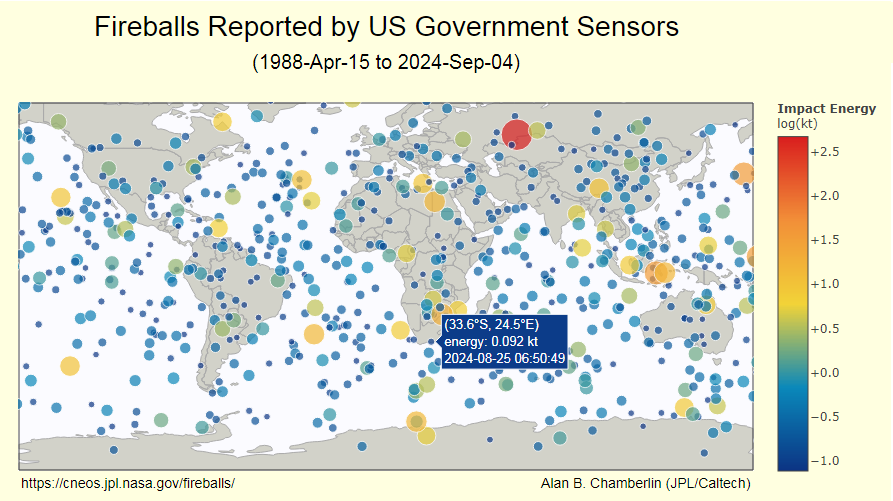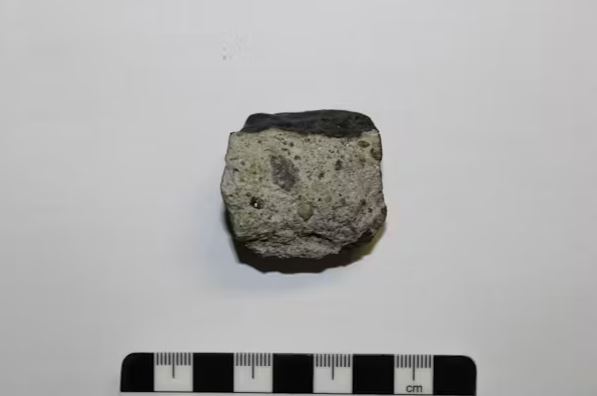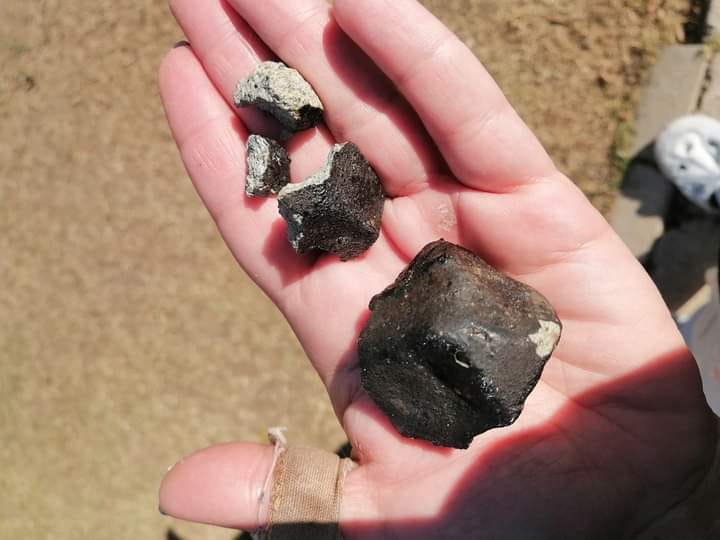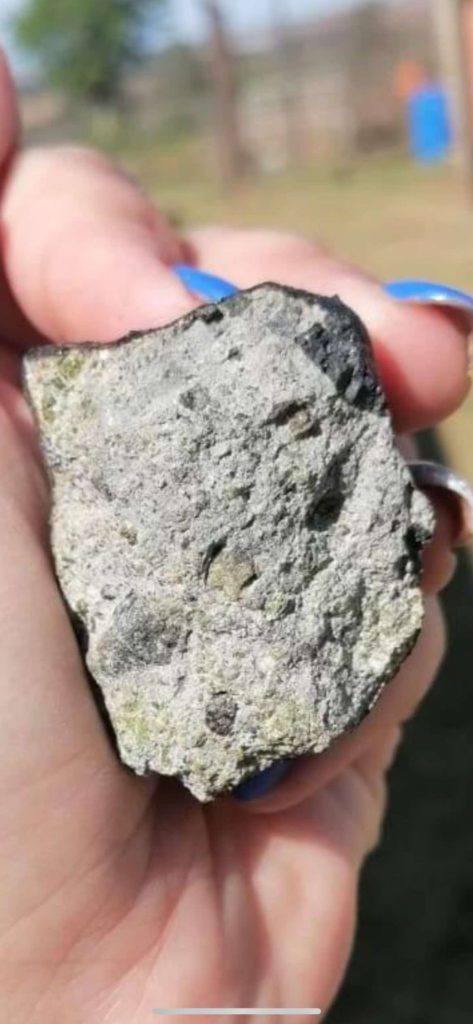Videos are impressive: during broad daylight, a very bright fireball fragments over South Africa and is recorded by numerous citizens. But the story is even more crazy! Not only did a meter-sized asteroid enter the Earth atmosphere on August 25th, 2024, at 06h 50min UT, but meteorites of HED-type were nearly immediatly recovered by a 9-year-old girl in Kirkwood (Eastern Cape province, South Africa)…
If you witnessed this event and/or if you have a video or a photo of this event, please
Submit an Official Fireball Report
If you want to learn more about Fireballs: read our Fireball FAQ.
A car-sized asteroid, a very bright fragmentating fireball and an immediate meteorite recovery!
On August 25th, 2024, 06h 50min, a very bright fireball was widely observed and recorded in broad daylight of a morning day in Eastern Cape province (South Africa), especially from Saint Francis Bay. One witness reported the fireball to the IMO via the Online Fireball Report form. Few dozens of second later, some people even heard a sonic boom and associated sounds like long rumbling noise. One of them, a 9-year-old girl called Eli-zé du Toit, “heard a rustling in a nearby fig tree. As she watched, a rock fell out of the tree. When Eli-zé picked it up, she noticed that the rock had a black crust and a grey interior “like concrete”. It was warm on the crust and cold on the inside.”, according to The Conversation. The 90-g meteorite was the remaining parts of the small asteroid that just entered the atmosphere! Other fragments were found near Nqweba, which gives the provisory name to the meteorite recovery.
Stunning Meteor, breaking up and streaking footage
St Francis Bay Eastern Cape
Credit to whoever took the footage pic.twitter.com/SICYWKddka— FineStructureConstant (@Tokamak137) August 25, 2024
According to recordings and CNEOS (NASA/JPL Center for Near Earth Object Studies) analysis, the asteroid radiated 2,6.10^10 J, for a total impact energy estimated to 0,092 ht of equivalent TNT (Figure 1). The small meter-sized asteroid entered the atmopshere slightly above 20 km/s speed (which is slightly above 72 000 km/h), and main fragmentation occured at approximately 38,2 km altitude.

A potentially rare achondritic breccia
As stated by the young girl talking about a rock looking “like concrete”, the Nqweba meteorite could be a rare achondritic breccia, from the HED (Howardite-Eucrite-Diogenite) group (Figures 2, 3 & 4). Analysis are underway to accurately determine the classification of the space rock, which displays “dark black glassy coating (fusion crust) with a light grey interior, peppered with dark-green and light-green grains and clasts”, acording to Mail&Guardian.



The meteorite was presented on September 3rd, 2024, in Gqeberha, during a press conference with researchers from the University of the Witwatersrand, Nelson Mandela University and Rhodes University. Now, scientists are waiting for further analysis to better understand this interplanetary rock history over the past 4,6 billions years…




 You saw something bright and fast? Like a huge shooting star? Report it: it may be a fireball.
You saw something bright and fast? Like a huge shooting star? Report it: it may be a fireball.  You counted meteors last night? Share your results with us!
You counted meteors last night? Share your results with us!  You took a photo of a meteor or fireball? You have a screenshot of your cam? Share it with us!
You took a photo of a meteor or fireball? You have a screenshot of your cam? Share it with us!  You caught a meteor or fireball on video? Share your video with us!
You caught a meteor or fireball on video? Share your video with us!
2 comments
Hi imo.net owner, Good to see your posts!
hi there I won’t more to now on the meteor pls reply